A couple of years ago, I was sent a wide variety of wines from the Santa Lucia Highlands to try. Before that, I’d only had a cursory introduction of the region, which is to say that I’d tasted a couple of wines from some of the region’s notable producers. And while I really enjoyed those wines, it still never occurred to me to learn more about the region. But on this most recent occasion while enjoying the wines, (not to mention cooking up a storm to pair them), I dig a deep dive into the region. It started with a Zoom with some of the region’s winemakers, but after that I still wanted to know more. I mean, it was necessary because the wines were ah-mazing! Two of the wines even made my Most Memorable Wines of 2020 list. After that, I couldn’t wait to visit. And lucky me, I finally got my chance! A visit to the region is an amazing getaway, whether you’re planning a long weekend or a week long trip mixed in with some active pursuits. But whew, watch out for that wind!

Where and How to Get There
The Santa Lucia Highlands region sits within the larger Monterrey region between the Salinas Valley and the Santa Lucia Range. It is a long, narrow region that is eighteen miles long and one to three miles wide. All told, it consists of only 22,000 total acres – much of it unplantable mountainside – with total planted acres coming in just shy of 6,000. The city of Monterey is the closest airport, but flying into San Francisco or Oakland provides more flight options and are only a couple hours drive. On my most recent trip, I flew into San Francisco and enjoyed the scenic drive down.
Why Visit
The SLH is known as a cool-climate region – an essential characteristic for world-class Pinot Noir and Chardonnay. And as I’ve learned, these characteristics also lead to exquisite Syrah. To be sure, the cold, deep Monterey Bay is the most important climatic influence in the SLH providing the area with significant amounts of wind and fog. The bay also provides a moderating effect for a long, consistent growing season.
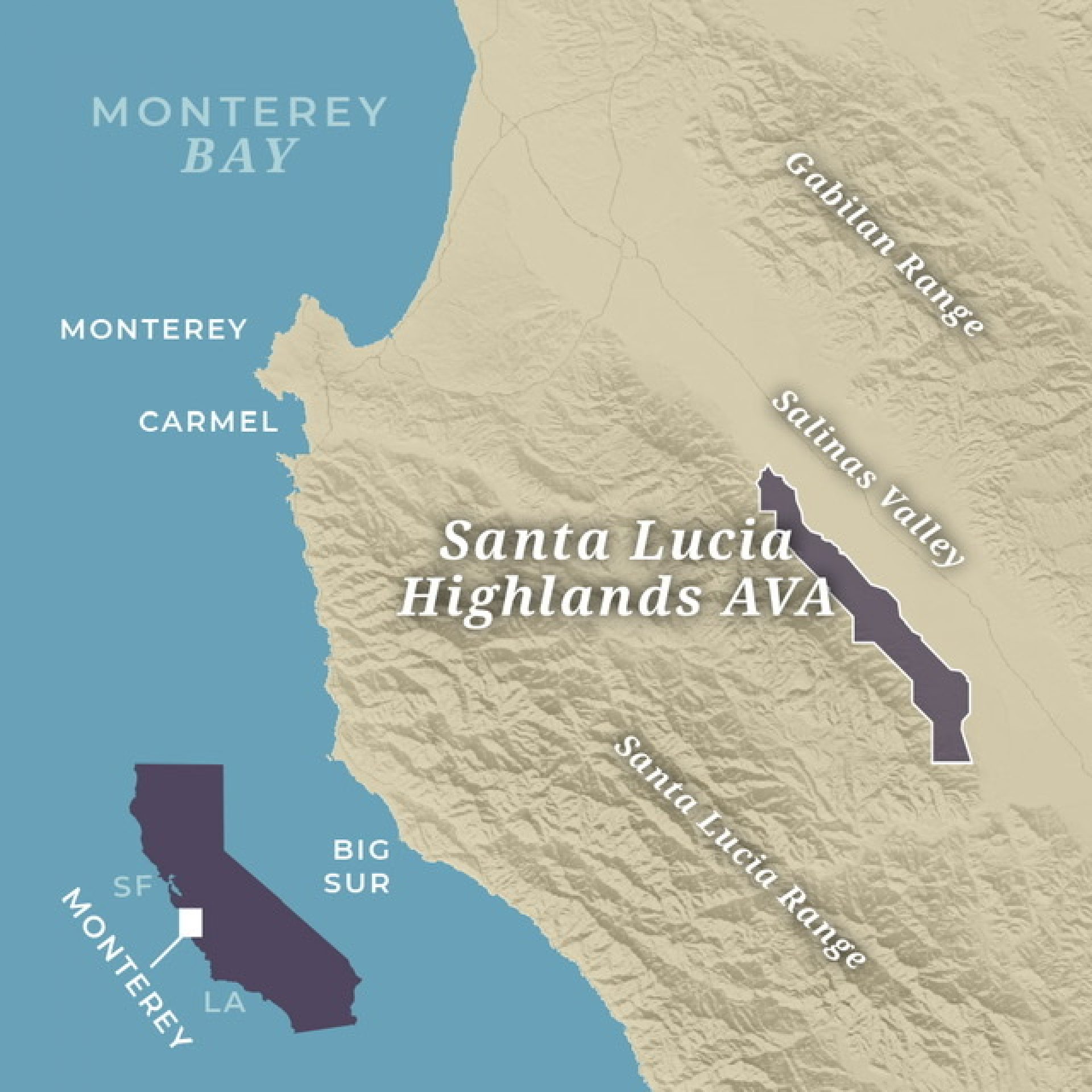
The length of the Salinas Valley, east of the SLH, stretches unimpeded from the very cool Monterey Bay in the north down to warm Paso Robles to the south. As Paso heats up, warm air rises up and sucks in the cool air from the Bay creating a vacuum effect over the Valley. The cool wind literally rushes in on a daily basis and serves two important purposes. First, the wind diminishes photosynthesis early in the day which extends the growing season. Second, the wind’s cooling effect enhances the carbon loading in grapeskins, where flavor and phenolic components develop, leading to complex wines with great depth and intensity. Put it all together and you get slow, gentle ripening and one of the longest growing seasons in the state with grapes that are fully ripe with marked acidity. And y’all, that wind is no joke! It just would not let me and my hair be great!
Where to Taste
The SLH itself is a mecca of farming. There are fields of grapes and produce (I’ve never seen so many strawberries in my life!) as far as the eye can see. All of this dedication to farming has been done with wine tourism at the back of mind. Vineyard names are seriously just as famous (some maybe even more so) than producer names. As a result, most producers aren’t able to host visitors at the actual winery production sites as you would find in many other wine regions. But not to worry. Many producers have met the tourism demand and opened tasting rooms in nearby Carmel Valley and Carmel-by-the-Sea.
Caraccioli Cellars
With a tasting room in Carmel-by-the-Sea, Caraccioli Cellars is known for exquisite wines from their famous Escolle Vineyard. Chief amongst the wines in the portfolio are their amazing sparkling wines. As a lover of bubbly, these wines made me swoon and also made me wonder how the heck I’d never had them previously. Better late than never I guess. I was just amazed at these bright, elegant bubblies with racy acidity. I was quite relieved when I returned home to find some of the wines at my local Spec’s liquor store in case I need a fix. And while sparkling wine is my ‘spirit juice’ and gets me excited, I’d be remiss if I didn’t add that Caraccioli crafts some lovely Pinot Noir, Chardonnay, and Syrah.
My visit there consisted of burritos and bubbles IN the Escolle Vineyard which was quite a special experience. In addition to current and older vintages of their wines, we were also able to taste some wines from their Private Property line of wines. These wines showcase the best of Monterey County farming and viticultural traditions, but offer greater approachability and affordability, while still delivering quality and complexity.
I mean, how perfect is this setting?!
Where to Taste: Carmel-by-the-Sea Tasting Room
Talbott Vineyards
Talbott Vineyards is known for its famed Sleepy Hollow Vineyard, which in 2016 was designated as one of California’s Grand Cru vineyards by Wine Enthusiast. The vineyard is known for for its ability to produce exceptional Chardonnay and Pinot Noir year after year, even under the most challenging conditions. In fact, it was one of the first vineyards planted in the Santa Lucia Highlands back in 1972. Along with Talbott’s Diamond T Vineyard, all wines are estate grown and are crafted in an elegant style inspired by Bourgogne.
During my visit, we had a tasty lunch with winemaker David Coventry in the barrel room that featured the Sleepy Hallow Chardonnay as well as two Pinot Noir wines from Sleepy Hallow. One of the wines was their exquisite “Fidelity” Pinot Noir which is selected from a 4.2-acre parcel of the vineyard and is the pinnacle of the Talbott portfolio. Truly sublime juice for sure! After lunch, David also provided a behind the scenes tour of the winery.
Where to Taste: Carmel-by-the-Sea Tasting Room
Hahn Family Wines
A Pinot Noir from Hahn Family Wines many years ago was my first memory of a wine from Santa Lucia Highlands. And boy did I enjoy it. At the time, I didn’t realize the extent of the fantastic wines to be had from the region. But I know now! Founded by Nicky and Gaby Hahn, who first came to the Santa Lucia Highlands in the late 1970s, the Hahn estate began life as a place for sheep, cattle, and horses. But it wasn’t long before the Hanns realized the potential of the soil and the climate for growing quality grapes. In fact, it was Nicky Hahn that was was instrumental in the Santa Lucia Highlands becoming an American Viticultural Area (AVA) in 1991. The winery is now in the hands of the second generation where they craft wines under several different brands – Hahn, Hahn SLH, Hahn Appellation Series, Hahn Winery Selection, and Lucienne under the Hahn Estate umbrella. They also produce wines under the Smith & Hook and Boneshaker brands.
During my visit there, we were able to enjoy a picnic lunch with winemaker Paul Clifton outside on the terrace overlooking the Salinas Valley. During lunch, we enjoyed a special tasting of Hahn SLH and Lucienne single vineyard wines. As exquisite as I remember!
Where to Taste: Hahn has two different locations for tasting. Like other producers, they have a tasting room in Carmel-by-the-Sea. But they are also one of the few producers that has an estate tasting room in Soledad. I highly recommend making an experience of it and visiting the estate for the amazing views on their expansive deck. Its the perfect place to kick back, enjoy the wine, and enjoy the wonder of this magnificent growing region.
Morgan Winery
Morgan Winery’s famed Double L Vineyard is another of those SLH vineyards that are just as famous, or even more so than the producers. In 2001, Double L became the first and only certified organic property in the Santa Lucia Highlands. The vineyard is also farmed sustainably. From the beginning, it was important to the Lees to build up the soil in the healthiest way possible, which set them on the path to organic viticulture. And here’s an interesting tidbit – the vineyard name stands for ‘Double Luck’ in honor of owners Dan and Donna Lee’s twin daughters.
During my trip there, we visited and tasted in the actual Double L Vineyard where we were hosted by Dan and Donna. Don gave us the skinny on the farming processes at the vineyard and then we had the opportunity to taste though several wines in the Morgan portfolio including the flagship Pinot Noir and Chardonnay, of course, but also their Syrah and their Riesling, which I’m just smitten with. For the Double L, Dan imported two Riesling clones from Germany that have quite a bit of the petrol characteristic for which the variety is known. According to Dan, there is a fair amount of Riesling in the region, but much of it is old and commercially farmed and generally goes to larger wineries for blending. But given its cool climate, its natural to wonder if more SLH winemakers will devote the time and care to it.
And the freshly caught oysters (like literally hours before) with the amazing chimichurri-like sauce was ah-mazing, particularly with the Riesling.
Where to Taste: Carmel Tasting Room
Folktale Winery
An all-day destination if you so choose, Folktale Winery was founded in 2015 by a band of artists, craftspeople, and lovers of life who brought their wandering imaginations and lofty aspirations to a magical piece of land in Carmel, California. Their goal was to cultivate grapevines and gardens to craft beautiful wines and experiences to delight the senses. For them, in every great bottle of wine, there is a story.
An what an experience it is. The wine garden and courtyard are spacious and tranquil which makes it easy to while away the hours in a laid-back atmosphere. Lush green landscaping, colorful and fragrant flowers, and comfy kilim pillows provide a relaxing oasis, while the string lights, fire pits, and hanging lanterns in the strawberry tree create a surreal glow in the evening hours. And don’t forget the games like Jenga and cornhole. In other words, its perfect day or night.
When it comes to the wine, Folktale is all about sustainability and honoring the responsibility they have as temporary stewards of the land. They provide a mind-boggling array of wines so there’s something for every palate. That commitment to sustainability extends to the onsite restaurant which sources seasonal food from local farms that is sustainably raised. The restaurant is open for lunch and dinner, as well as Sunday brunch.
During my visit, we were hosted by winemaker David Baird and owner Greg Ahn. We had dinner and enjoyed wine in The Greenhouse which is a stunning space with a wall of elegant French doors that can offer privacy to create a cozy indoor space, or can open directly to the beautiful outdoor Wine Garden. The lofty space is anchored by a beautiful handmade Monterey Cypress table and festive overhead lighting.
Where to Taste: Tasting Room & Restaurant in Carmel-by-the-Sea
McIntyre Vineyards
Steve McIntyre is one of the OG pioneers of Santa Lucia Highlands and the founder of McIntyre Vineyards. He was one of the folks that helped Santa Lucia Highlands become an AVA, planted nearly 20% of the entire AVA, and farms nearly a third of the region’s vineyards. Suffice it to say, he is one of the most knowledgeable viticulturists around. Like a walking encyclopedia of all things Santa Lucia Highlands. He was also an integral part of the creation of the Sustainability in Practice (S.I.P) Certified program which I just highlighted not too long ago.
The McIntyre estate vineyard is home to some of the region’s oldest Pinot Noir and Chardonnay vines. These are intense and nuanced wines and just a joy to drink. During my visit, I got to spend an afternoon with Steve learning about vineyard soils, sustainability, water conservation and even learned about the use of biochar in the vineyard. We even had the opportunity to get up close and personal with the soil by getting down in some soil pits. No better way to learn and from one of the most knowledgeable folks around.
Where to Taste: McIntyre Tasting Studio in Carmel. This one is near Morgan’s tasting room.
Pisoni Vineyards
Meeting Mark Pisoni made me want to instantly want to be adopted by him. Like me right alongside his young children. And yeah, I’m probably older than him, but whatever. He is everything farming personified. Farming is what the Pisoni family does and it is rooted in their DNA. Jane and Eddie Pisoni started farming in the Salinas Valley in 1952 and the care and pride they consistently brought to their work has been taken up in turn by their son Gary and his children, Jeff and Mark. Today, they are stewards of some of the most sought after fruit in the region. The Pisoni family makes wines under the Pisoni Estate, Lucia Vineyards, and Lucy Wines labels. They also partner with a Master Somm named Sara Floyd to craft the Luli Wines.
A visit to the Pisoni estate truly brings home the extent that farming is everything to them. I mean seriously, is there nothing they don’t grow?! I lost count of the different fruits I saw growing on the property. Heck, I didn’t even realize there were so many different types of peaches! They even raise their own bees and make delicious honey. Even the kids get in on the act. Mark Pisoni’s young son raised a pig and made some tasty sausage. We were lucky to get a taste of it during our visit. While touring the property, we indulged in some of the Lucy and Luli wines. Walking around, I just couldn’t help but think how wonderful a place I was experiencing.

Not long after it was time to go down into the caves and taste some more wine from the Pisoni Estate and Lucia lines. Talk about extraordinary wines with amazing depth of flavor and purity of fruit.
Where to Taste: Contact for tasting appointments.
ROAR Wines
Four generations of Franscionis have been farming the SLH’s terrain for 100 years. Inspired by the roar of the cool winds streaming in from the Monterey Bay and the roar of the mountain creeks, which bisect the rocky, well-drained vineyards, ROAR Wines celebrates the best of their vineyards and the signature bold flavors of the Santa Lucia Highlands. Gary and Rosella Franscioni planted Rosella’s Vineyard on their home ranch in 1996, followed by Garys’ Vineyard in 1997, which is a partnership between Gary Franscioni and Gary Pisoni. Their first vintage of ROAR was released in 2001 to critical acclaim. Years later, they planted the Soberanes Vineyard, another partnership with the Pisoni family. They also own and farm Sierra Mar, their southernmost vineyard. Why all the talk about the vineyards? Because they represent the foundation of SLH wine – exceptional vineyards.
During my visit, we hung out in Garys’ and Soberanes Vineyards (which are adjacent to each other) with the Franscioni family (Gary, Adam, & Nick), Mark Pisoni, and the Franscioni/Pisoni vineyard teams. We learned about and were given a demonstration on how to properly prune the vineyards and drop unnecessary fruit. And then it was our time to do some pruning in Garys’ vineyard. The Garys’ Vineyard is one of the most famous vineyards in California, and produces some of the most prized and coveted fruit, which is NOT inexpensive. And even though they are literally dropping money on the ground when they prune and drop fruit, it’s so important to them to get the best fruit possible rather than focus on volume.
We had a little completion and were judged on our work. And the best pruner won a magnum of ROAR Pinot Noir. Wouldn’t you know that this crazy gal here (who prunes and cuts flowers at home all the time) won one of the two magnums! I was worried about cutting and dropping such premium fruit, but got the job done. We also tasted some amazing wines right in the vineyard under the massive oak trees and even took a tractor ranch tour. So much fun!
Where to Taste: No tasting room, but private tastings by appointment.
A Few Others
When tasting in Carmel-by-the-Sea, the tasting rooms of Wrath Wines and Kori Wines should also be part of your itinerary. We were able to experience some of these wines with dinners and after-dinner hospitality time.
Other producers that don’t have tasting rooms but craft wine from the SLH that we were able to enjoy include Mansfield-Dunne Wines, August West, Clarice Wine Company, Cattleya, and Brulium (who I’ll be covering more on an upcoming Healdsburg post). Now that you know where to taste, let’s explore where to eat and stay.
Where to Eat
Carmel has no shortage of delicious restaurants that focus on locally-sourced, sustainable cuisine. The folks at Folktale Winery are masters at sourcing local foods. And the pizzas are ah-mazing!
Oh and For the ultimate in quaint and cozy, Hog’s Breath Inn is the place to visit. The outdoor courtyard complete with mural and fireplace beckons you to kickback. And the ahi tuna poke is the bomb!

And for seafood, a visit to the Sardine Factory in Monterey is a must. They’ve been around since 1968 in the historic Cannery Row, so you know they must be din something right. It doesn’t hurt that they have a killer wine list to boot.
Where to Stay
Depending on whether you want to spend most of your time in Caramel-by-the-Sea or explore the wider region will dictate where you stay. Staying in Carmel-by-the-Sea puts you right on the water in a charming storybook village setting full of shops, galleries, gourmet food options, and tasting rooms. I absolutely loved it and completely understand why people are so smitten with it.
Just about everything can be explored by foot and when you tire of wine and shopping (as if!) just walk on down to the coast to take in the roaring surf of the Pacific.
Nearby Monterey is also on the water and is a bit larger, with more of an urban feel. I’d venture to say that it is also more family-friendly. It provides a mix of larger hotel chains on down to smaller, boutique properties and the touristy Cannery Row area has a charm all its own. A little further inland with wide-open spaces and home to several luxurious resort properties is Carmel Valley. During my recent trip, I stayed at Carmel Mission Inn on the outskirts of Carmel-by-the-Sea and loved the property, especially the patio area complete with cozy fire pit.
I can’t say enough about how much I love this area – the vibe, the views, and of course, the wine.
*Photos by The Corkscrew Concierge & Richard Green Photography














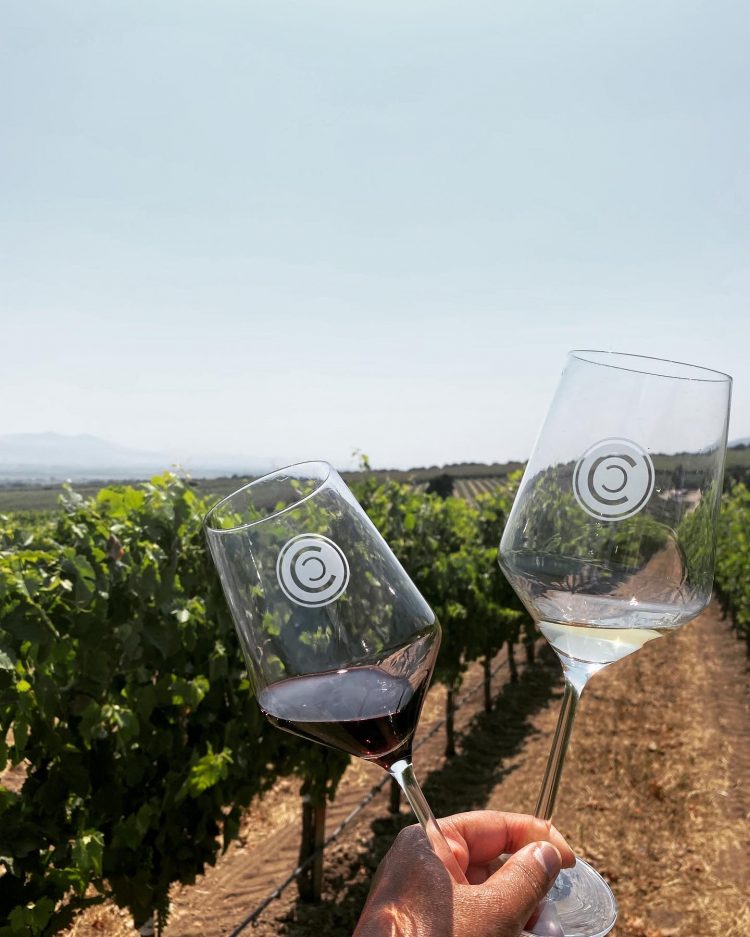












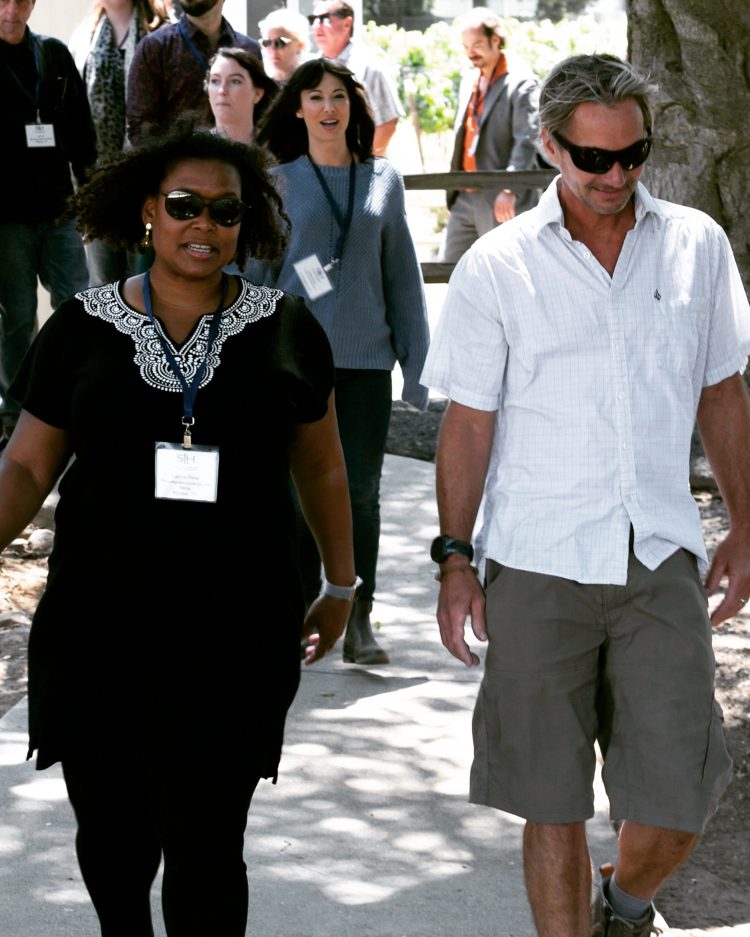













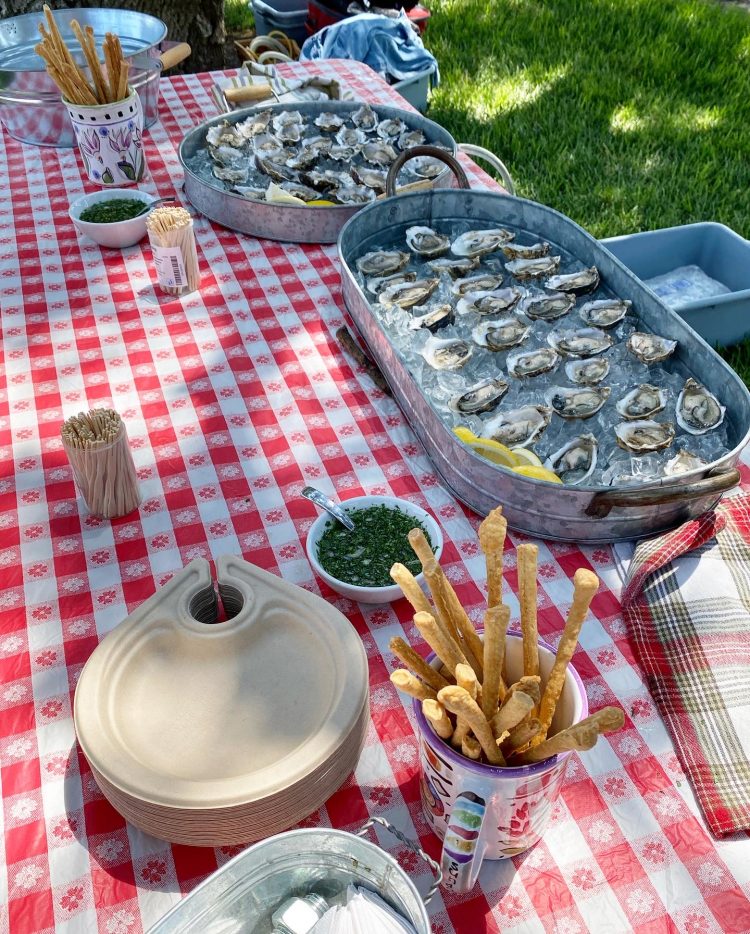


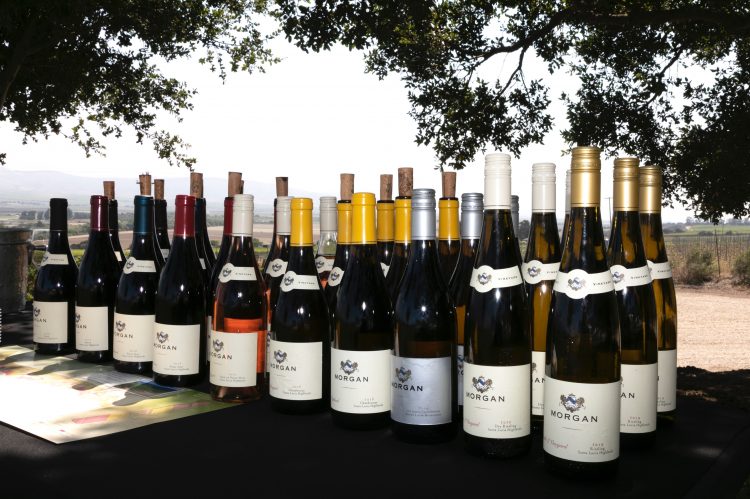

















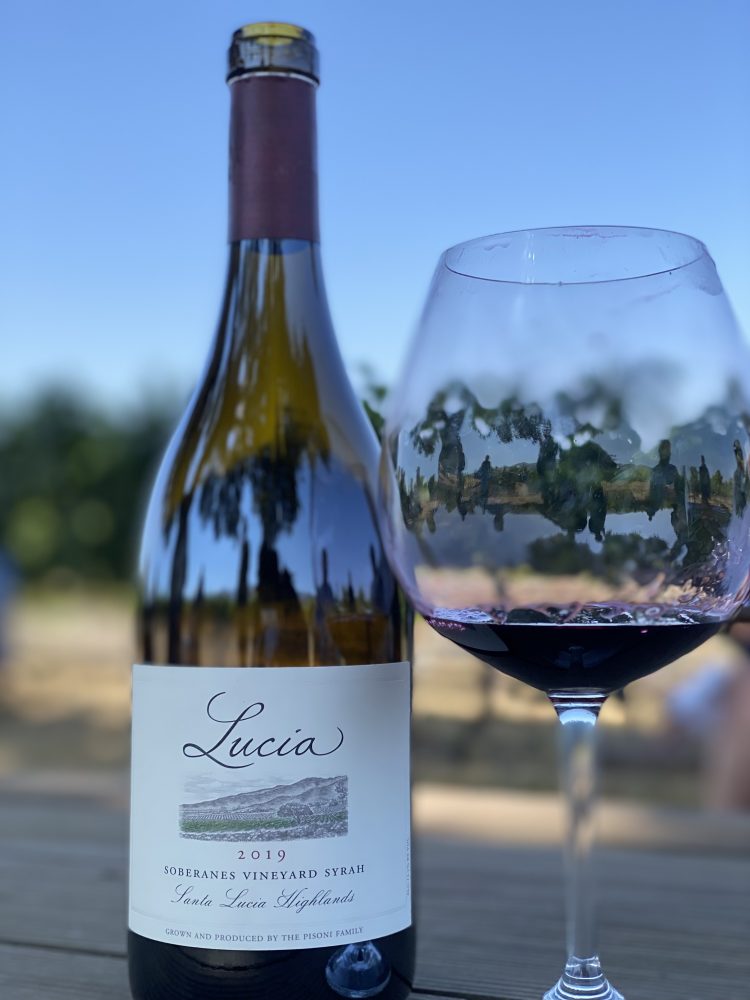



















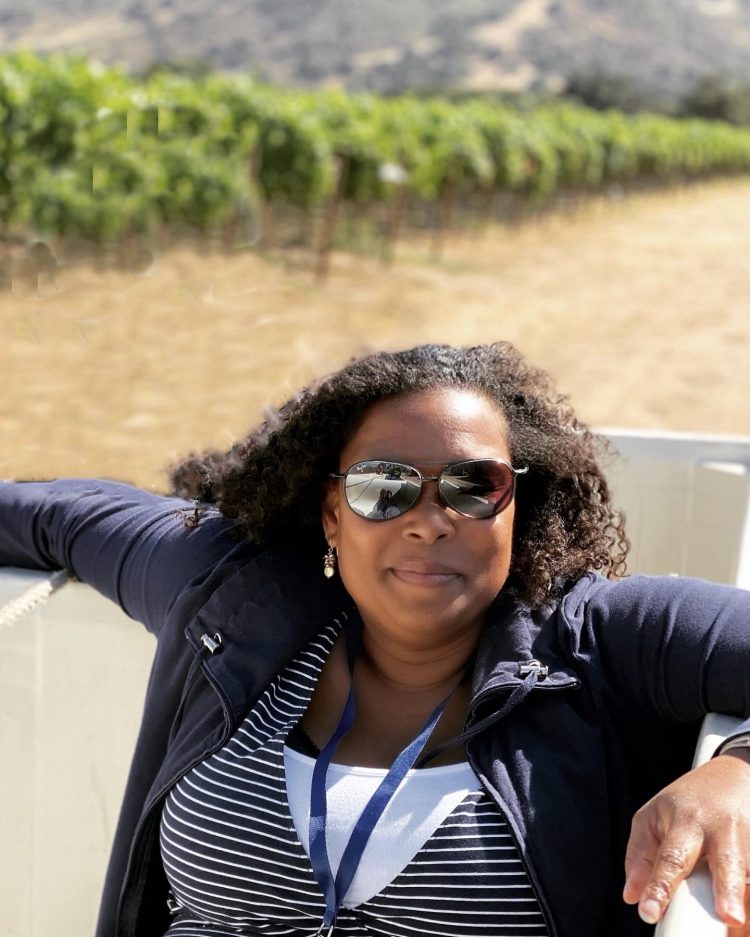


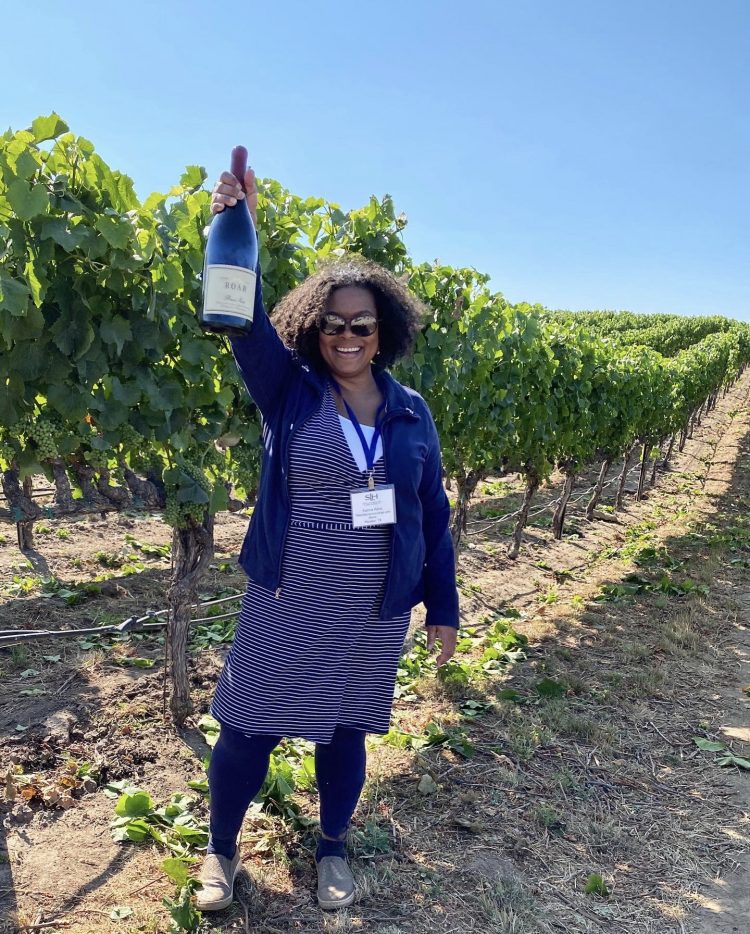
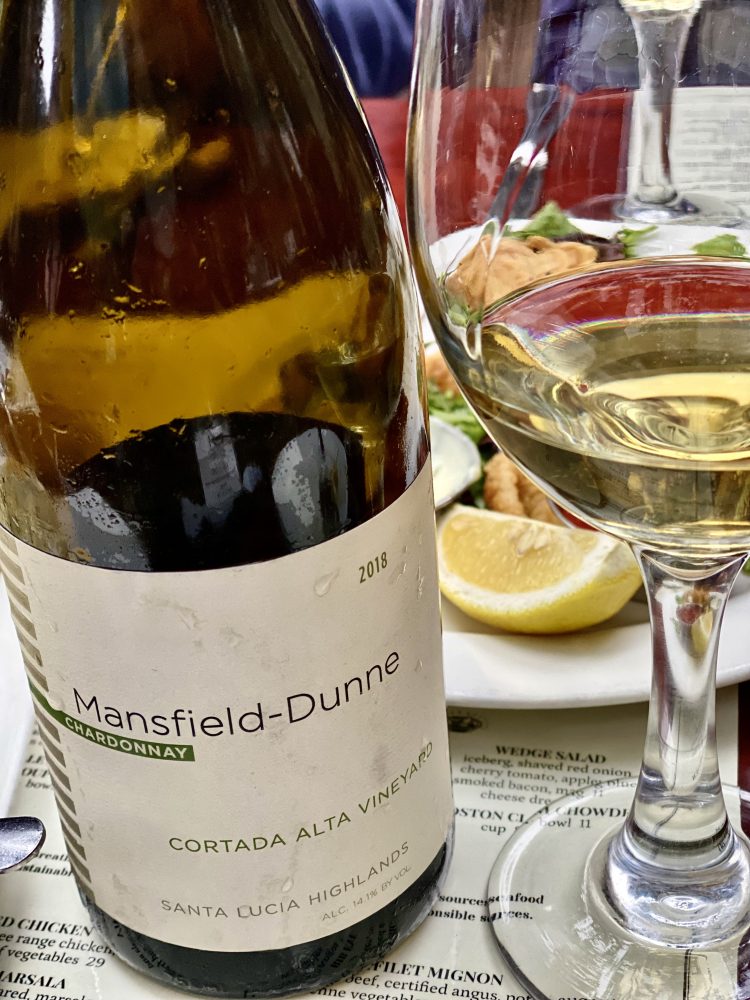
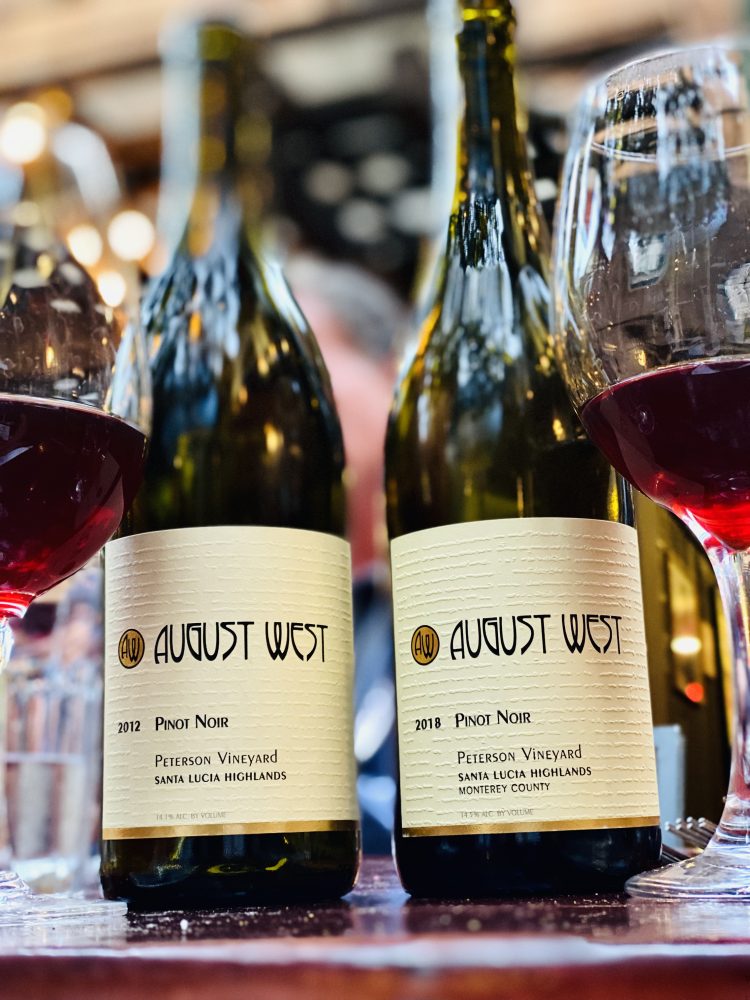












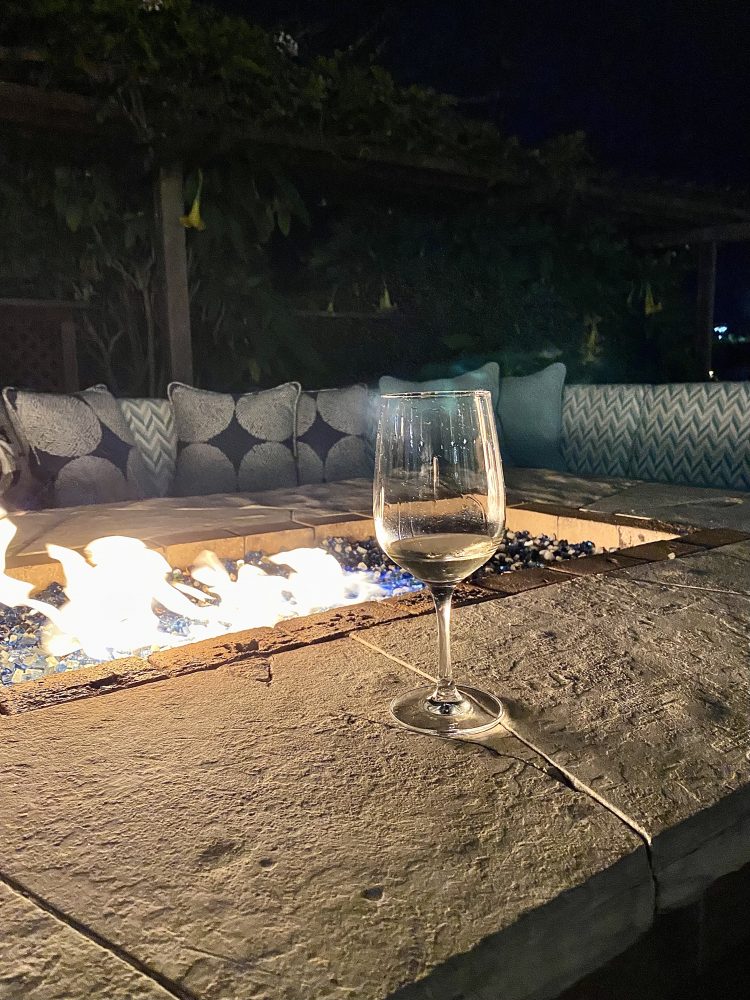

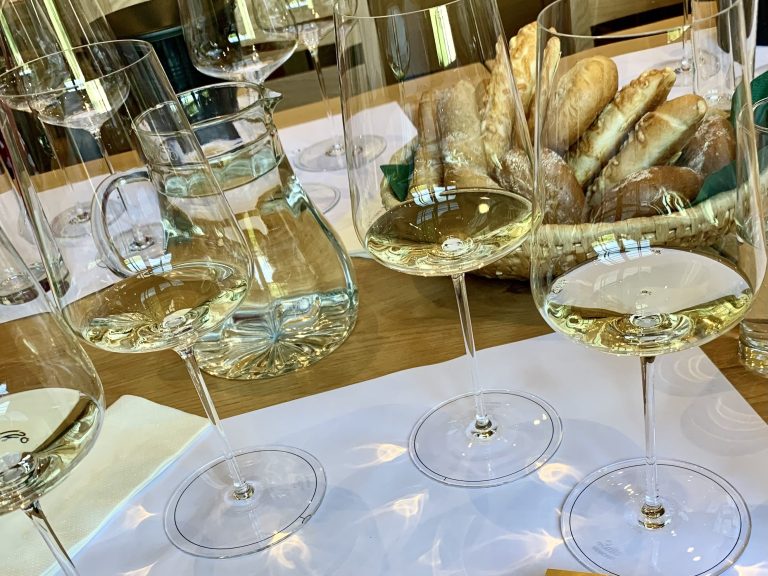



2 Comments
robincgc
•2 years ago
What an excellent overview of the region! This is an area that I have not explored—time to remedy that and use your amazing recommendations. I love Carmel, and we have explored just a bit of Monterey, but we have not tasted much from Santa Lucia Highlands, outside of perhaps some things that Randall at Bonny Doon used to make.
Kat
•2 years ago
Hope you’re able to explore the region a bit more. I definitely plan to return.